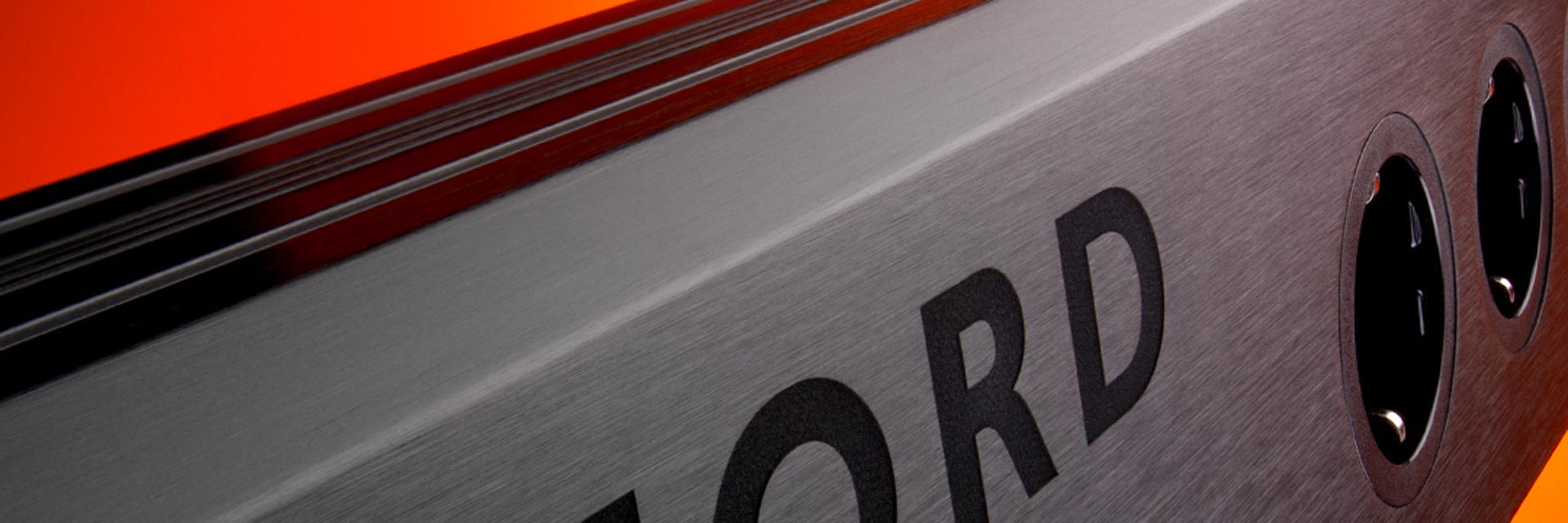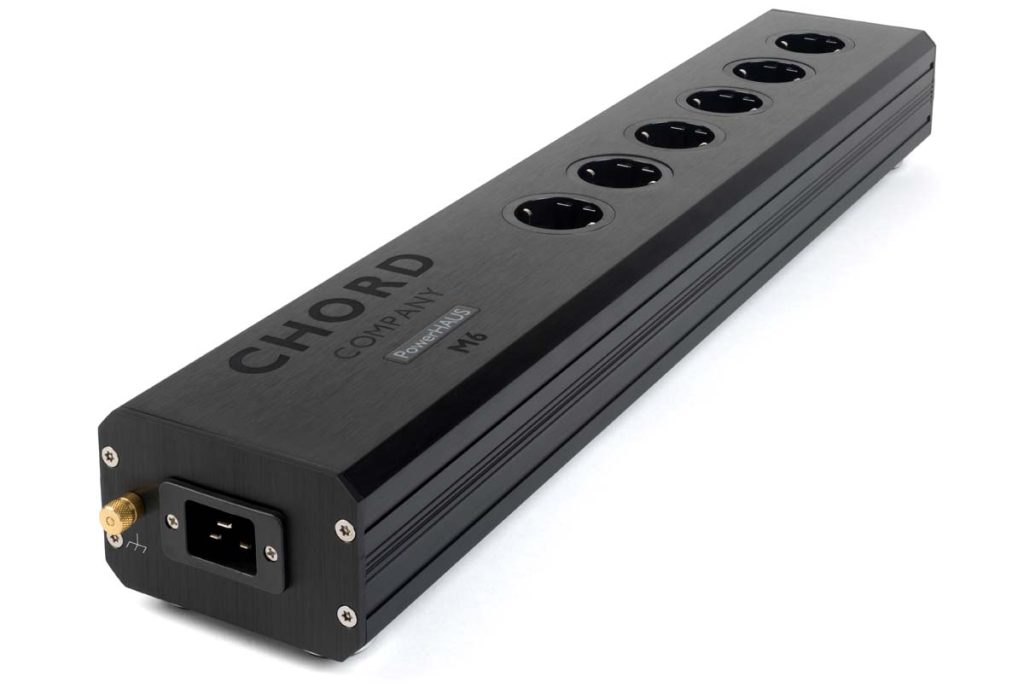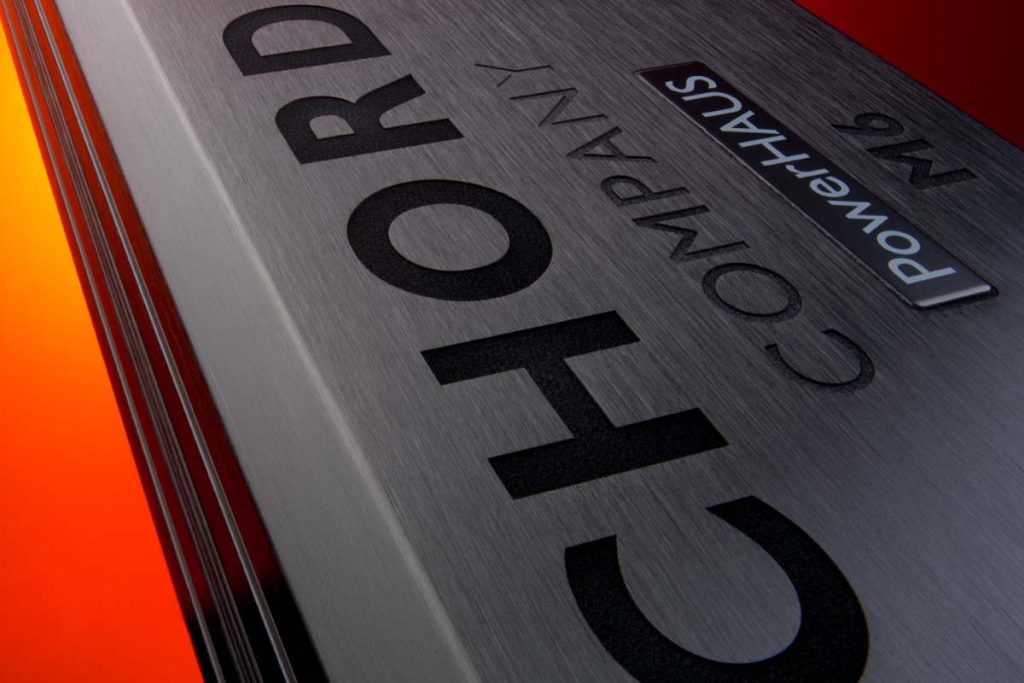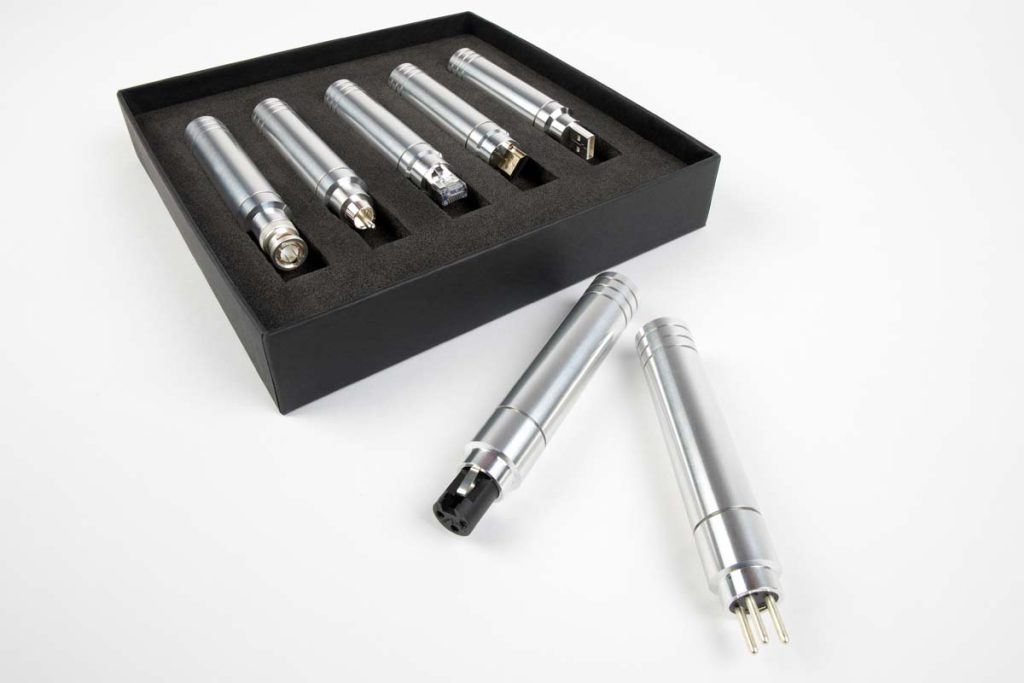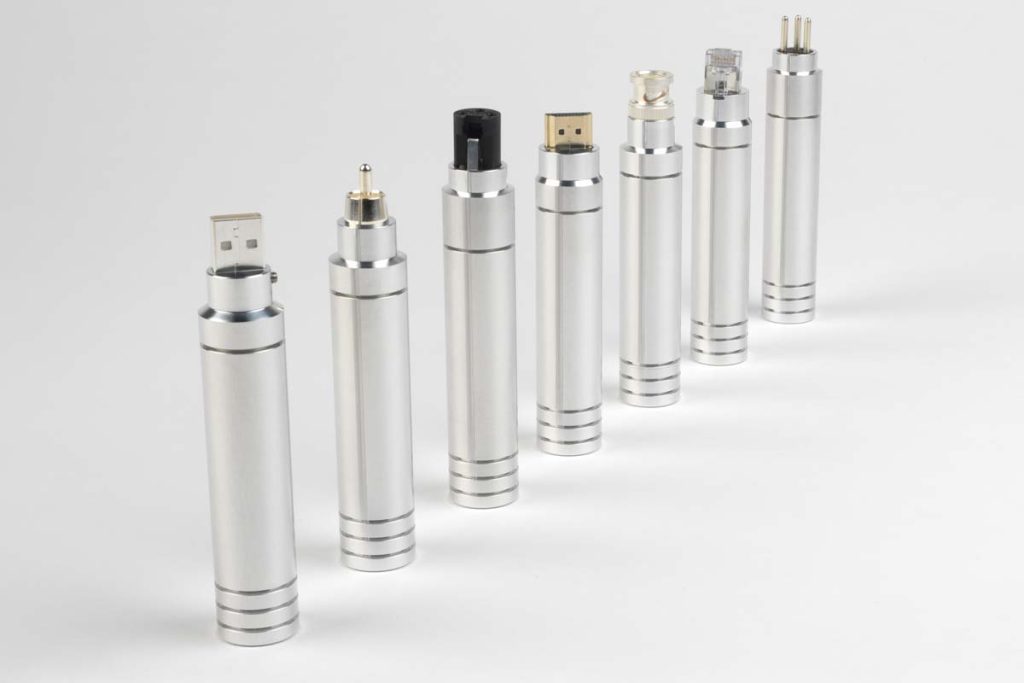This power strip looks decidedly unspectacular, but in everyday use it proves to be an extremely effective weapon against high-frequency interference, against the electrical “dirt” that comes from the mains and elsewhere. Clever technology makes it possible.
No, I’m certainly not whining about my industrial neighborhood again at this point. Regular FIDELITY readers probably know by heart the power supply problems I’ve had in my old building since I’ve lived here. So I’ll just say this: years ago, I got the problem under control with an elaborate filter network strip, so that about 95 percent of the sound impairments, such as sibilant vowels, disappeared. I always blamed the remaining five percent on the rest of my system, which, although it had been overhauled, could still be described as “vintage” in principle.
But far from it: Since the aforementioned filter bar had to make way for the “PowerHAUS M6” from the UK-based Chord Company, about 4.8 percent of sound has been added. The last fractions of a percent could probably only be achieved if I were to move from the (original) old building to a new one with a correspondingly modern power supply. But since this is currently not an option, I enjoy the small but very noticeable leap that the system has made thanks to the extremely solidly made PowerHAUS M6 – and at the same time I wonder how the Chord engineers, who have always been very innovative when it comes to power supply, have achieved this.
A first clue are the so-called GroundARAYs, which the German distributor has thankfully included: small metal cylinders with various connectors from RCA plugs to USB counterparts. These are supposed to be plugged into a free device input, integrated resonators convert high-frequency interference into heat and thus keep it out of the signal transmission.
This actually works in practice, and very well. The ear gets used to some weaknesses of the playback equipment quite quickly and takes them for granted. Only when they are corrected does one realize how much better some things can sound. And this is exactly the transition that the Highender makes with the PowerHAUS M6. On my honorably graying Mark-Levinson components (see “Teammates”), the difference feels something like having driven a high-horsepower mobile from preferably Swabian production with the handbrake on. Short, hard impulses like the all-encompassing massive bass drum beat in the intro of “Crazy Love” on Paul Simon’s unbreakable Graceland come with such unprecedented power and definition: Now it really seems to be the fist of God pounding on the table before Simon sings about “Fat Charlie the Archangel”.
If you ask Alan Gibb, Boss and chief developer of The Chord Company, one of the most important design details is that there are no filter elements in the sense of the word, that there are no components directly in the current flow in the PowerHAUS M6, but three ARAYs in parallel with the busbars. Chord’s proprietary technology eliminates common-mode and push-pull interference, he said. “We’re careful to keep the impedance as low as we can,” Gibb explains. Nearly as important, he says, is keeping the interaction of the conductors with each other as low as feasible. After all, a conductor moving in a magnetic field generates current – “and that causes unwanted interference,” knows Gibb, who used to work for the (then still predominant) record player manufacturer Linn, among others. And when he founded his own company, he was inspired by Naim, which manufactured high-quality cables long before it entered the amplifier business. According to Gibb, Naim used high-quality plugs and sockets made in Germany, which later inspired the Chord Company to give their power strip the “English” name “PowerHAUS”, which reflects the self-imposed quality standards – we’ll just chalk that up to praise. Sufficient power or sheer load capacity even with higher ampere values (up to 16 A) is available here, by the way, even for power-hungry monster power amplifiers. “We love music,” Alan Gibb says dryly. That’s why the phase is also marked, so that nothing can go wrong when connecting.
The German distributor DREI H included a whole set of Chord power cables with the PowerHAUS M6 for demonstration purposes. The successive replacement of my existing cables with the Chord products was acknowledged by my system with gradual increases in definition and sharpness of detail. In the “final stage”, when the cabling of the source, preamplifier and power amplifier was completely changed over to Chord cables, the sound image seemed even a shade “rounder” despite a noticeable increase in resolution. Just like switching from a digital camera with a 20 megapixel sensor to one of today’s popular “pixel slingshots” with 40+ megapixels. A strong indication that low impedance, lowest possible crosstalk and low capacitance are priorities in all Chord products. Therefore, there is no harm in plugging said GroundARAYs into free device slots for testing and listening carefully to the results – positive surprises almost guaranteed.
Nevertheless, one restriction must be made (as with all power accessories): Depending on the living environment, the age of your own four walls and the resulting quality of the house power supply, the beneficial influence of the PowerHAUS power strip will be more or less noticeable. A reputable dealer will allow good customers to take a test device home with them in case of doubt, before around 2600 Euros are spent over the counter. In any case, the PowerHAUS will keep its place in my system. The king is dead, long live the king!
Accompanying Equipment
CD-Player: Mark Levinson No. 390S, Ayon CD 10 II Signature | SACD-Player: Sony SCD 333 ES | Turntable: Artkustik Seismograph II | Cartridge: Clearaudio Da Vinci und Jubilee MC, Denon DL-103R | Integrated amplifiers: Roksan Attessa Integrated, Mark Levinson No. 5805, Aavik I-580 | Preamplifiers: Cambridge Audio Edge NQ, Mark Levinson No. 38S | Power amplifiers: Mark Levinson No. 27 | Phono preamp: Musical Fidelity M-VYNL | Loudspeakers: SoundSpace Systems Robin | Accessories: Silnote Audio and Morrow Audio, Creaktiv Little Reference, Solidsteel S5-3
Specifications
Power strip Chord Company PowerHAUS M6
Concept: power strip for six devices with three hybrid GroundARAYs mounted in parallel to the common rail | Enclosure: antimagnetic metal | Special features: low impedance wiring, special shielding between conductors | Finishes: aluminum, black | Dimensions (W/H/D): 11/8/60 cm | Warrant Period: 2 years | Price: around 2600 €

